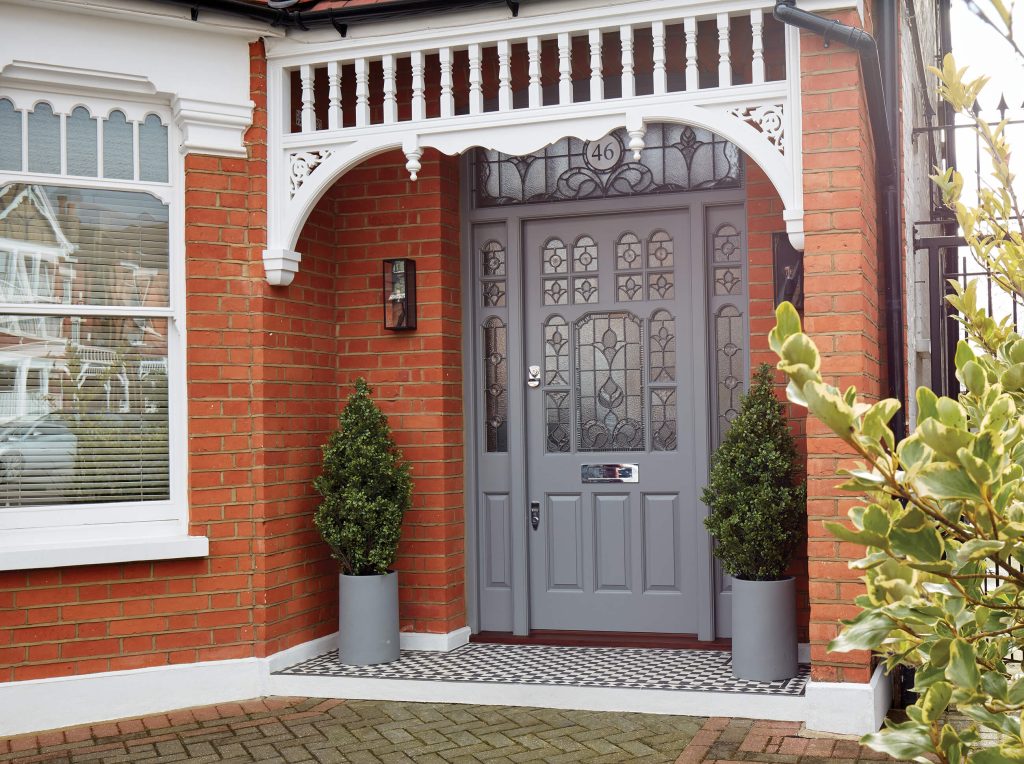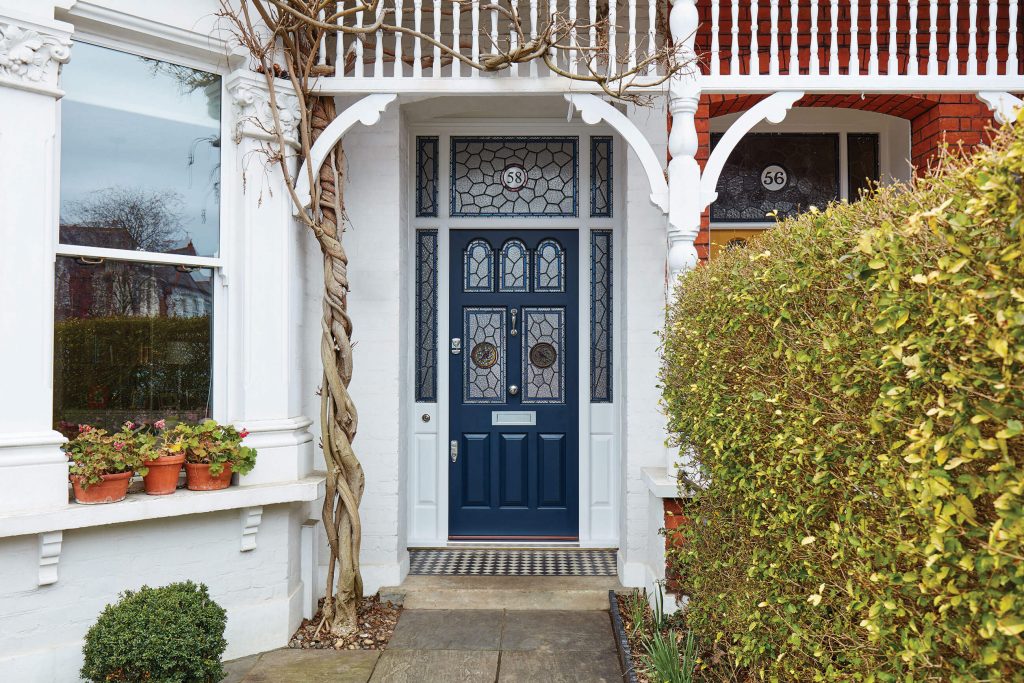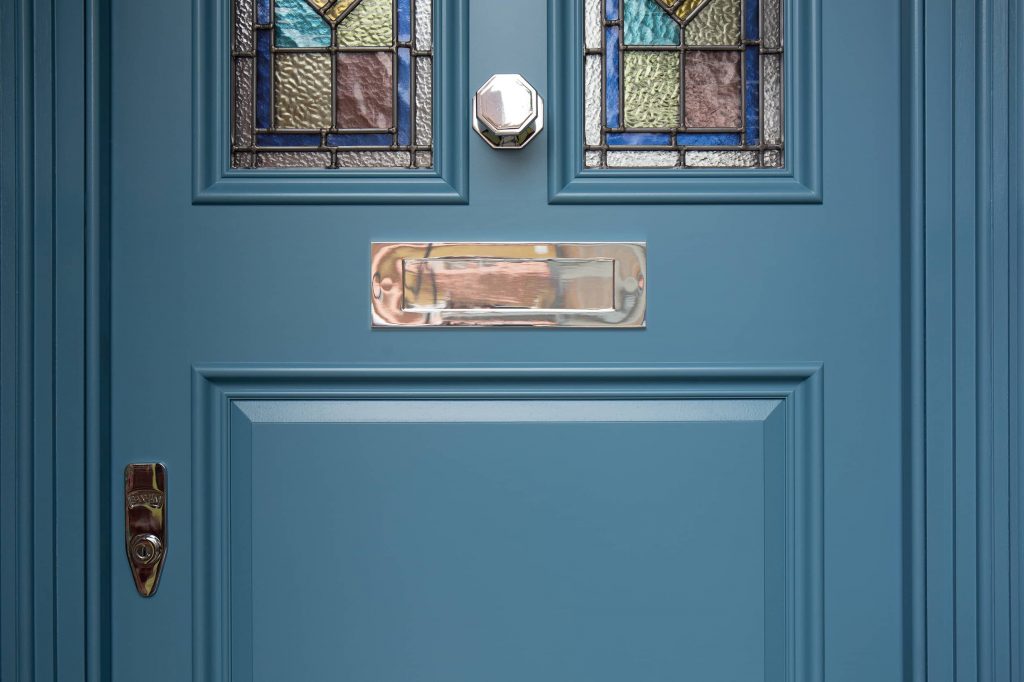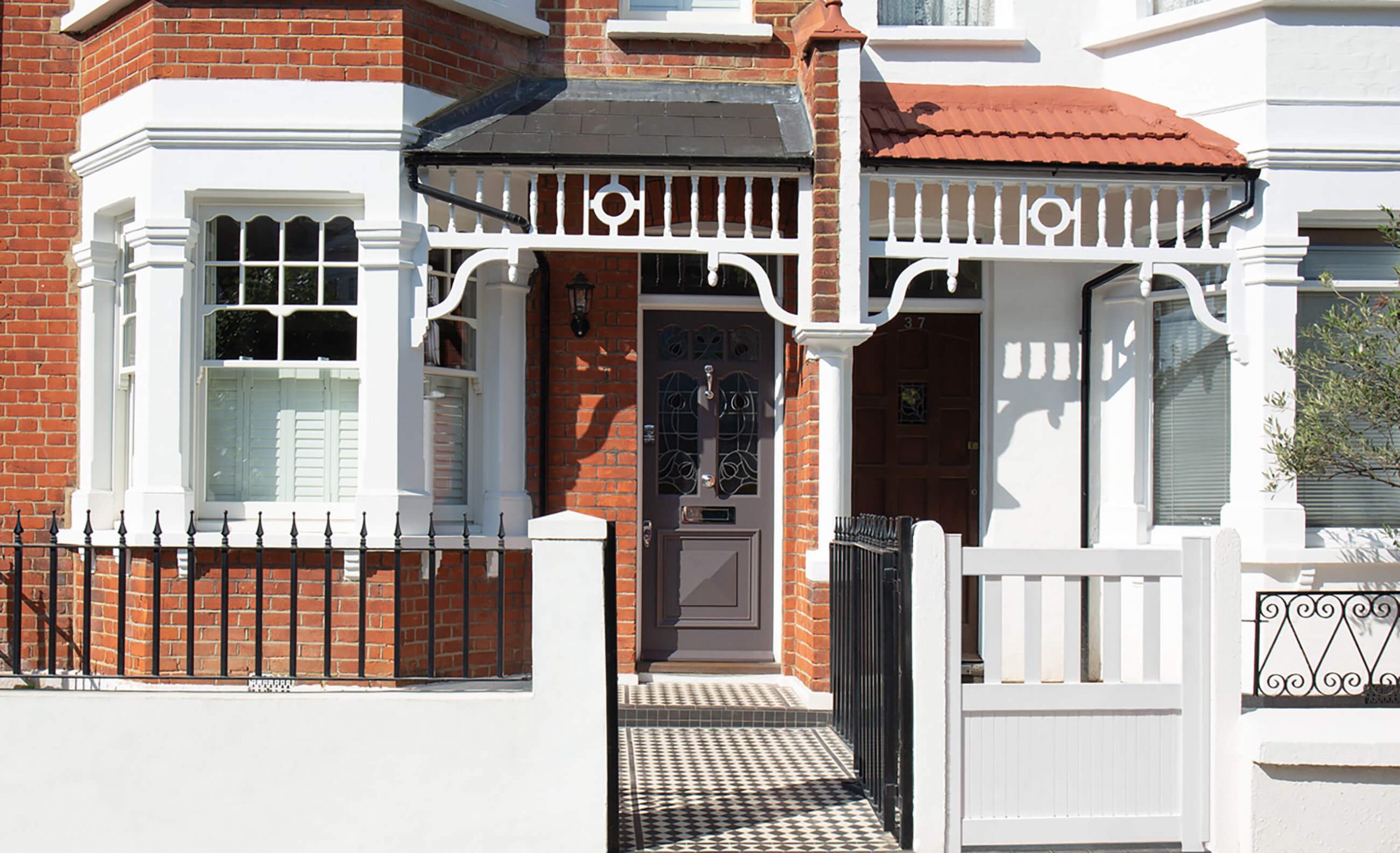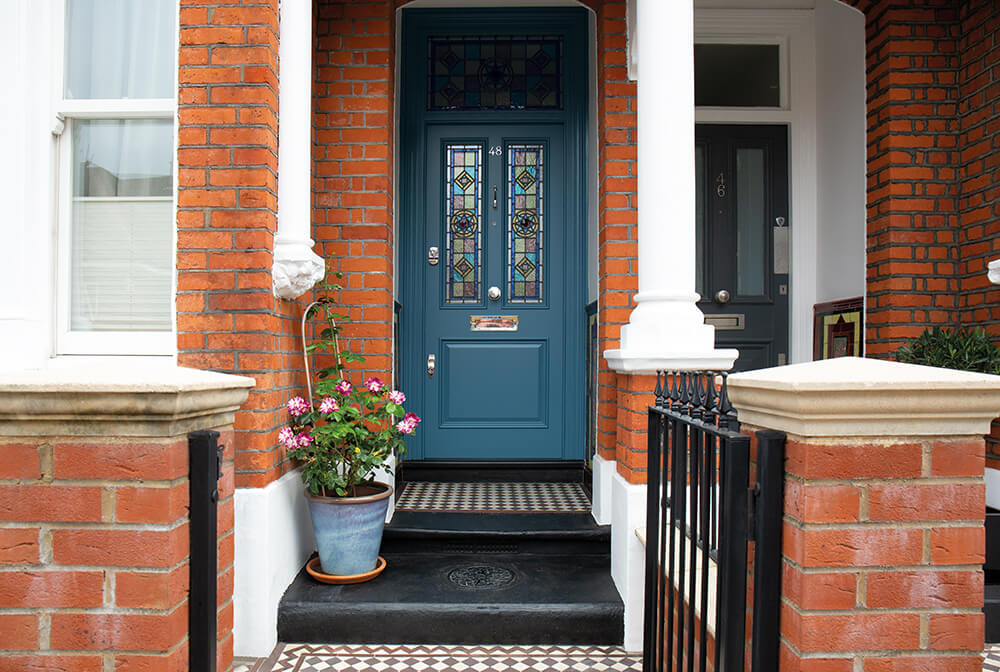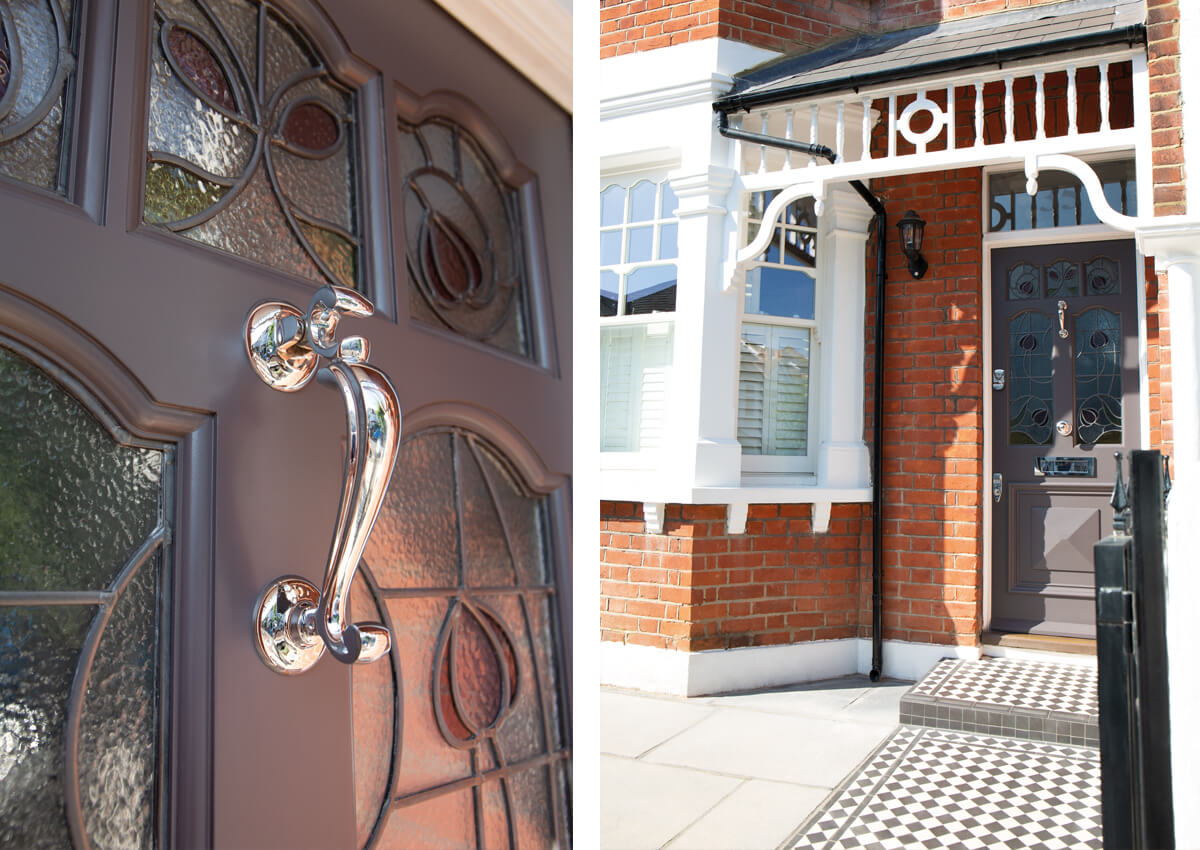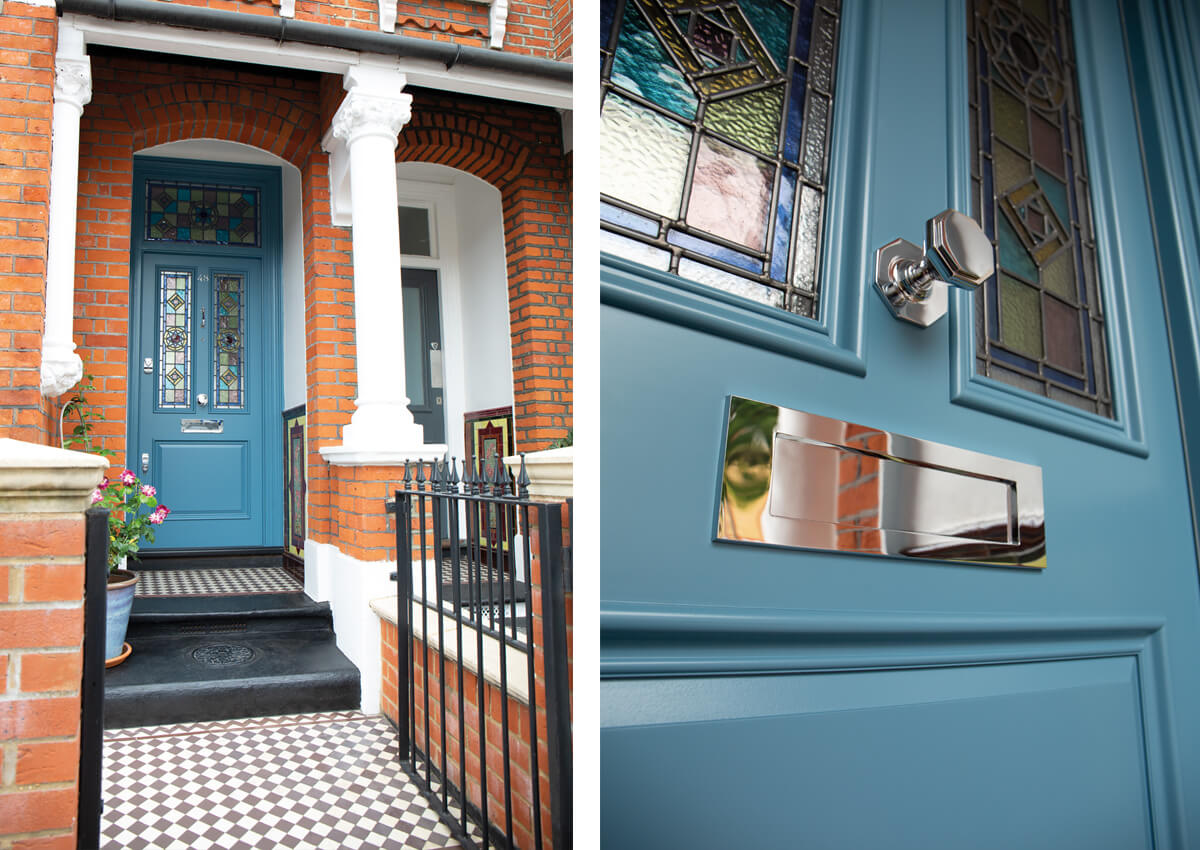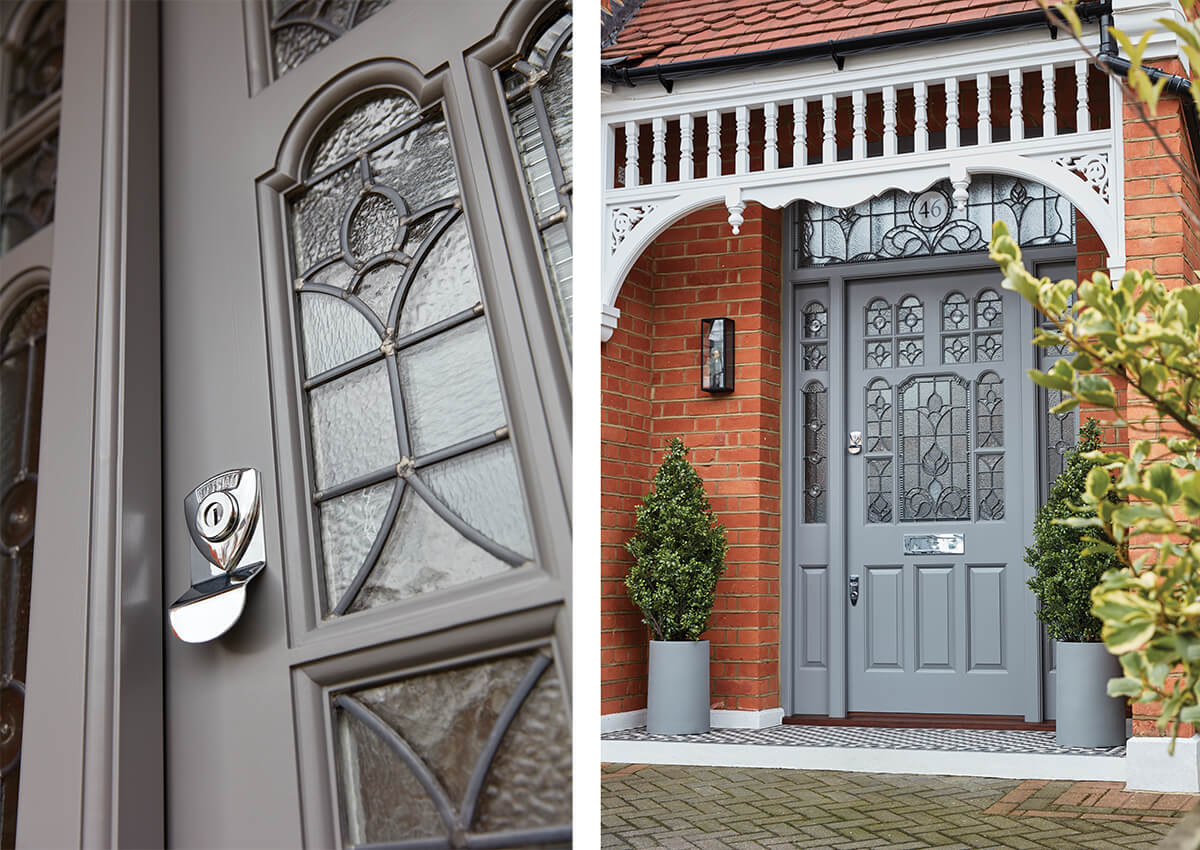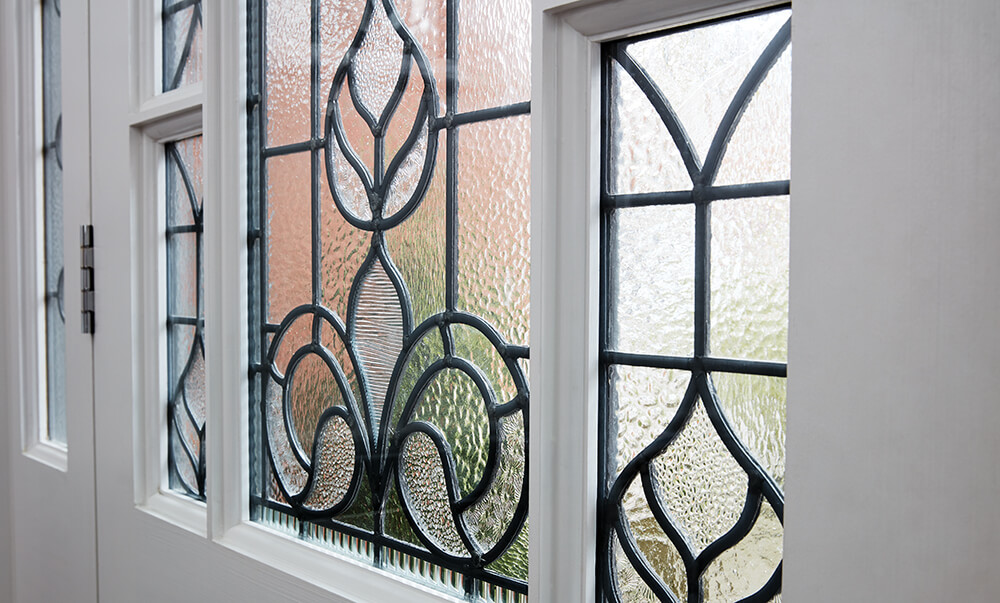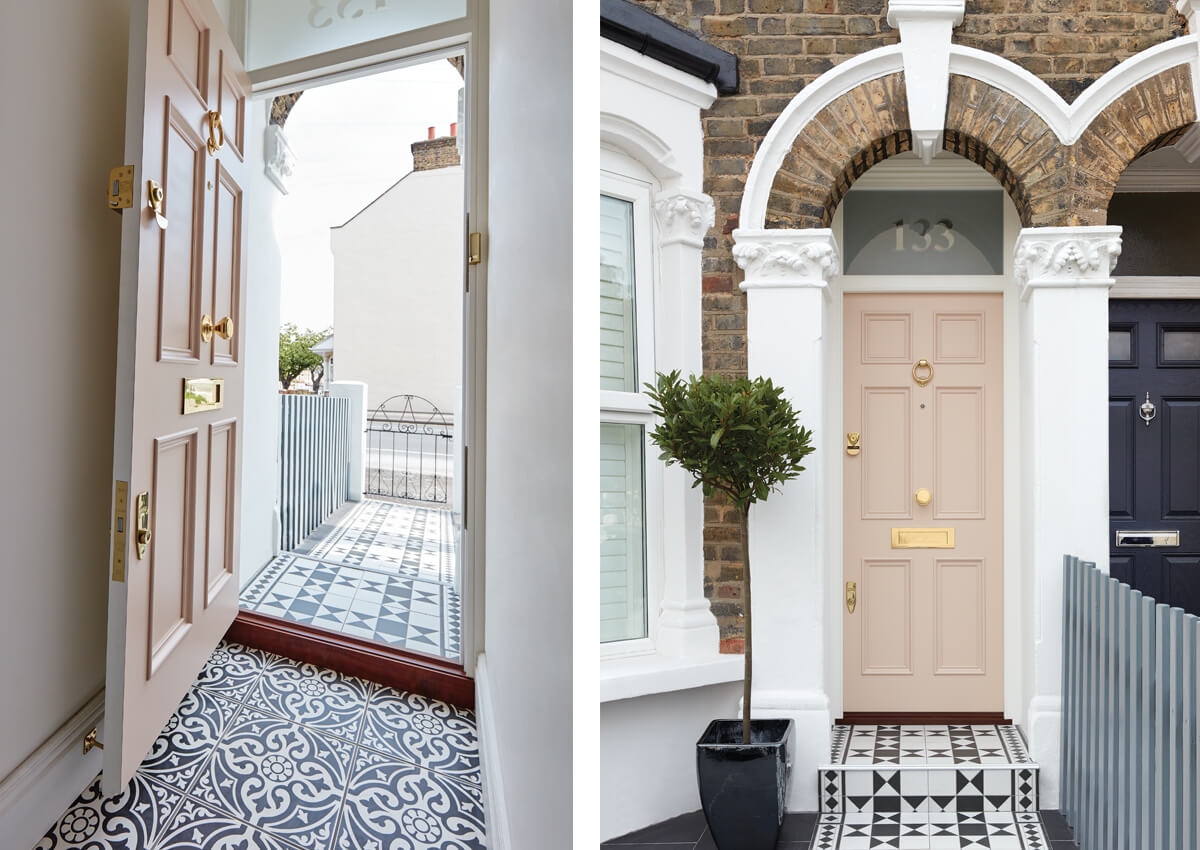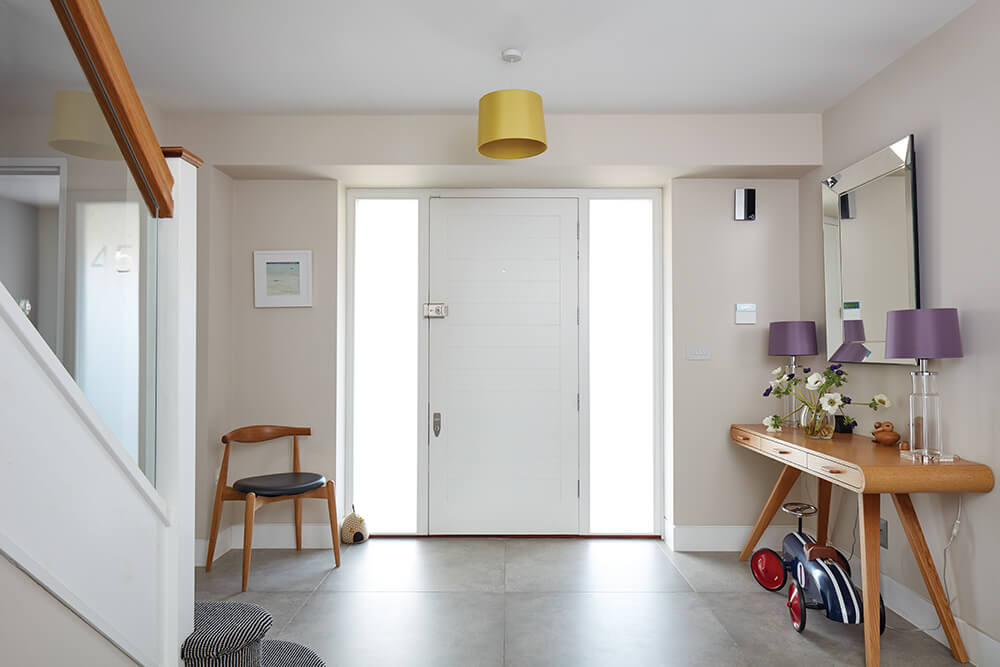For a home to be classed as Victorian, it should have been built between 1837 and 1901. That’s a timeline of 64 years, so you can imagine how many homes in London are genuine Victorian properties that expand from the city to the suburbs. Today, many modern homes are inspired by the style, layout and features seen in Victorian properties. As well as the red brick, striking gables, Victorian doors and bay windows, houses of this period had an easy-to-recognise interior style.
This was an era when people were becoming more socially mobile, so first impressions really did count. Homeowners would often introduce ornate glazing or stained glass into fanlights or sidelights – essential sources of light in the days before electricity. Larger homes may have had a porch at the front with a part-glazed door. This allowed visitors to kick off their boots before entering the house and act as a form of insulation for the hallway.
Many Victorian homes are full of character and charm with high ceilings and well-proportioned rooms that lend themselves beautifully to today’s tastes and trends.
Our Latest Victorian Doors
The Victorians were lovers of quality and stability and certainly knew how to build structures to last. Thanks to their solidity and charm, Victorian houses will hold their value and are a popular choice for many buyers today.
Our experts painstakingly research designs and details from the period of every home to ensure that each door we design is truly sympathetic to the properties age. From structural details such as panelling to aesthetics like paint colour, our time spent on historical research brings up the results required to recreate original concepts that respect the elegance of London’s stunning Victorian architecture. Here are a few of our latest client projects featuring inspiring Victorian doors.
Victorian Door With Stained Glass
This beautiful property features monochrome ceramic tiling, which leads from the garden gate straight to the front doorstep. Here you’re faced with a beautiful, solid wood front door, expertly constructed to fit the facade of this impressive Victorian home.
It’s a beautiful example of how a bespoke London Door Company door can be, with perfect proportions and unique glazing. It features five traditional panels, beautiful leaded glass with authentic Victorian designs, and stylish door furniture transforming the facade.
Victorian brickwork was typically red and rich in colour. This means that many doors from this era complemented the building work with deep colours such as this warm grey called Flint or lustrous maroon.
Luxury Blue Victorian Front Door
This luxury blue Victorian door painted in our unique colour, Cornflower, features stunning stained-glass panels. The bold blue tones and colour leaded glass perfectly exhibit the traditional elements of Victorian design and beautifully compliment the period of the property.
Victorian doors were often elaborately carved with an imposing architrave and surrounding details to match the door. As glazing became less expensive and easier to manufacture, glass was also a favourite feature; the more intricate and brightly coloured, the better. At London Door Company, our glaziers are experts at restoring and recreating original glass in doors and fanlights – a typical feature of the Victorian era.
Grey Victorian Leadlight Door
The owners of this Victorian villa wanted to enhance their entrance further with an awe-inspiring grey Victorian door design. We worked closely with them to craft an extra-thick, triple wood-panelled door and frame that complement the home’s architectural features.
Grey front doors make a lasting impression. Whether they’re hand-painted in an elegant shade of slate, timeless charcoal or pale dove grey, it’s a colour that never seems to go out of style. This iconic slate grey adds real kerb appeal when contrasted with the brick fascia and ornate white details.
Clear leaded, textured glass, shaped and cut into intricate patterns, was set into the door, sidelights and fanlight of this stunning design. Instead of coloured glass, we worked with form and texture – the end result is nothing short of majestic.
Beyond the Front Door: Front Door Paint Colour
Once inside, a typical Victorian hallway can be quite dark, even if it’s pretty spacious. So, to counterbalance the darkness, the inside of Victorian doors can benefit from paintwork in a lighter colour. Keeping the hallway light and airy with pale-coloured décor while retaining as much of its original character as possible is a great idea. Mirrors will also help to reflect the light and create the illusion of space.
High Ceilings and Ornate Characteristics
Victorian hallways often feature impressive high ceilings punctuated with ornate cornices, plaster mouldings and ceiling roses. These ceiling heights created a sense of space, making narrow hallways appear larger than they are. If you can, try to maintain original plasterwork as it’s often difficult and expensive to replicate precisely; however, adding authentic features from reclamation yards could boost its value in the long run. If your home features Victorian details such as these, regular maintenance and cleaning will minimise the cost of long term care.
Statement Tiles
Inside Victorian homes, it’s typical to find original or reconstructed flooring. This was often highly patterned and very hard-wearing, making it perfect for areas with heavy traffic. Investing in tiles will give your Victorian home authenticity, and it’s something that will stand the test of time. Go for a style that ties in with your interior scheme and play with patterns to create something unique. While tiles were an expensive luxury for the Victorians, these days, there’s a bit more flexibility when it comes to flooring.
Illuminate your Entrance
Long, narrow hallways are ‘very Victorian’, so if yours conforms to this layout, you’re on the right track. It presents opportunities rather than challenges because you can have fun with lighting. Pendant lights and ornate chandeliers can help you to recreate historical glamour and add sophistication to your hallway. You can also add drama and character with picture lights or up-lighters.
Seasonal Declutter
In Victorian city homes, it’s normal to accumulate clutter, coats and shoes in the hallway. A regular seasonal reassessment is needed to ensure your hallway remains clear of clutter. Make a list of the items you need to keep in the hallway and banish all others to relevant areas of the home. Be ruthless – if it hasn’t got a function or doesn’t enhance your room’s look, re-home it.
Invest in some storage such as shoe racks, a coat stand or hooks for bags. Make good use of the space under your stairs and keep the tops of side tables free of clutter such as keys and junk mail. Seasonal bulky outerwear and items such as wellies are best kept to a minimum or stored in closed spaces to keep your hallway from looking like a dumping ground.
Curated Décor
Victorian hallways are a great opportunity to curate and display your good taste. Think about beautiful glassware, artwork, mirrors or candles. If you have a hero piece, it’s great to build your theme around that. Remember, your hallway is where everyone gets their first glimpse of your home. Great design can make a positive lasting impression.
Ready to Take the Next Step?
Explore our entire collection of bespoke front doors by requesting a free brochure or speak to one of our experts in a free no-obligation design visit.
View our Victorian doors here.
